David Saintillan Confining active fluids
The biophysical seminar will take place Friday, June 26th in Amphi HOLWECK at 1:00pm (ESPCI, 10 Rue Vauquelin, staircase C on the first floor).
Active suspensions, of which a bath of swimming microorganisms is a paradigmatic example, denote large collections of individual particles or macromolecules capable of converting chemical fuel into mechanical work and microstructural stresses in a viscous liquid. Such systems, which have excited much research in the last decade, exhibit complex dynamical behaviors such as large-scale correlated motions, pattern formation, enhanced diffusivities and mixing as a result of hydrodynamic interactions. In this work, we use a combination of theory and numerical simulation to investigate the effects of confinement on the structure and dynamics of active fluids. We first analyze the case of a dilute suspension confined between two planar walls, and use a continuum model to explain a number of experimental observations including the accumulation of particles are boundaries, as well as upstream swimming, centerline depletion, and shear-trapping when a pressure-driven flow is applied. We then turn to the effects of concentration, and show that hydrodynamic interactions between swimmers can drive instabilities leading to spontaneous flowing states with net fluid pumping. The case of circular confinement is also addressed using numerical simulations, where the emergence of steady vortex patterns and their stability are described.


